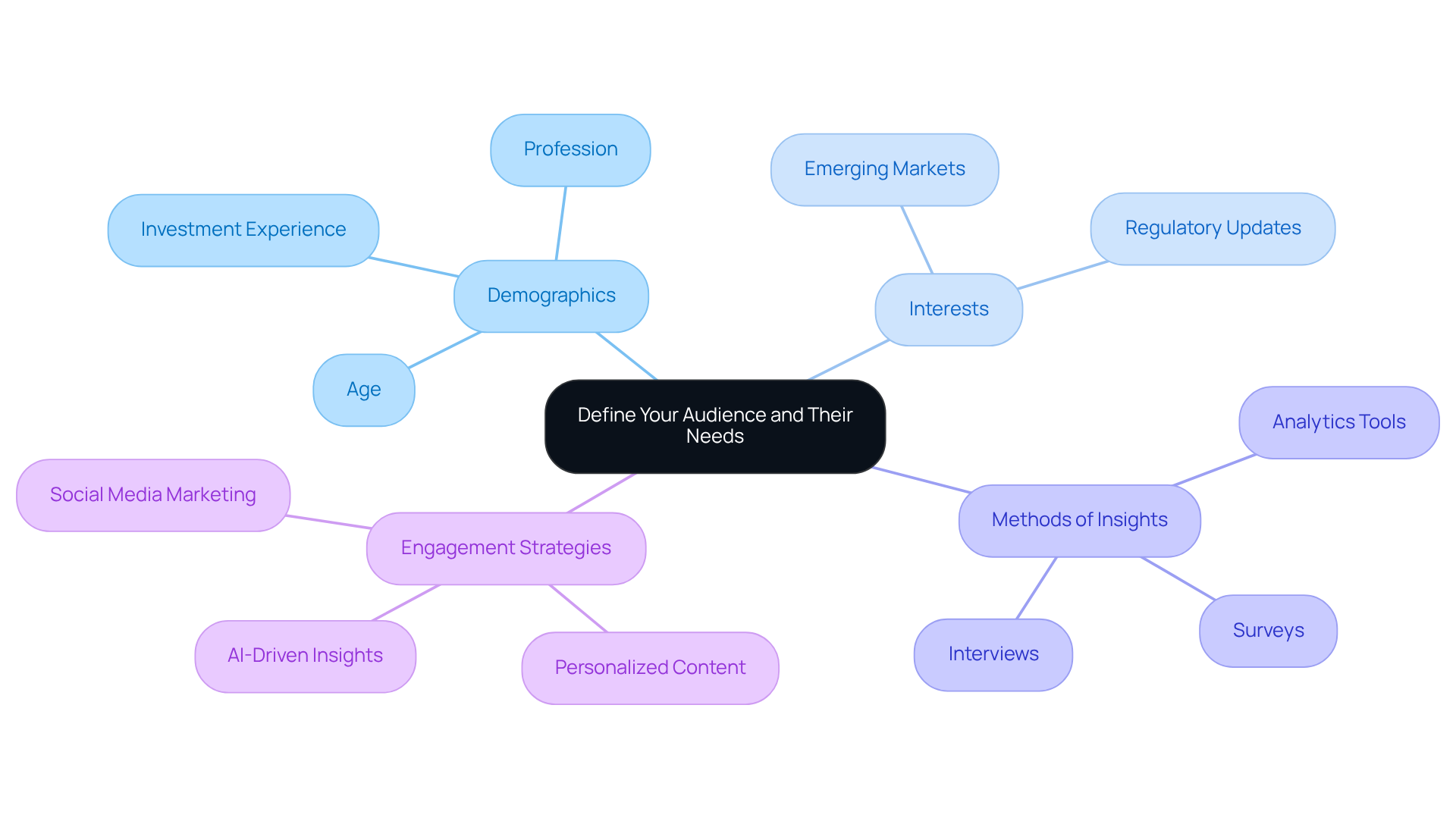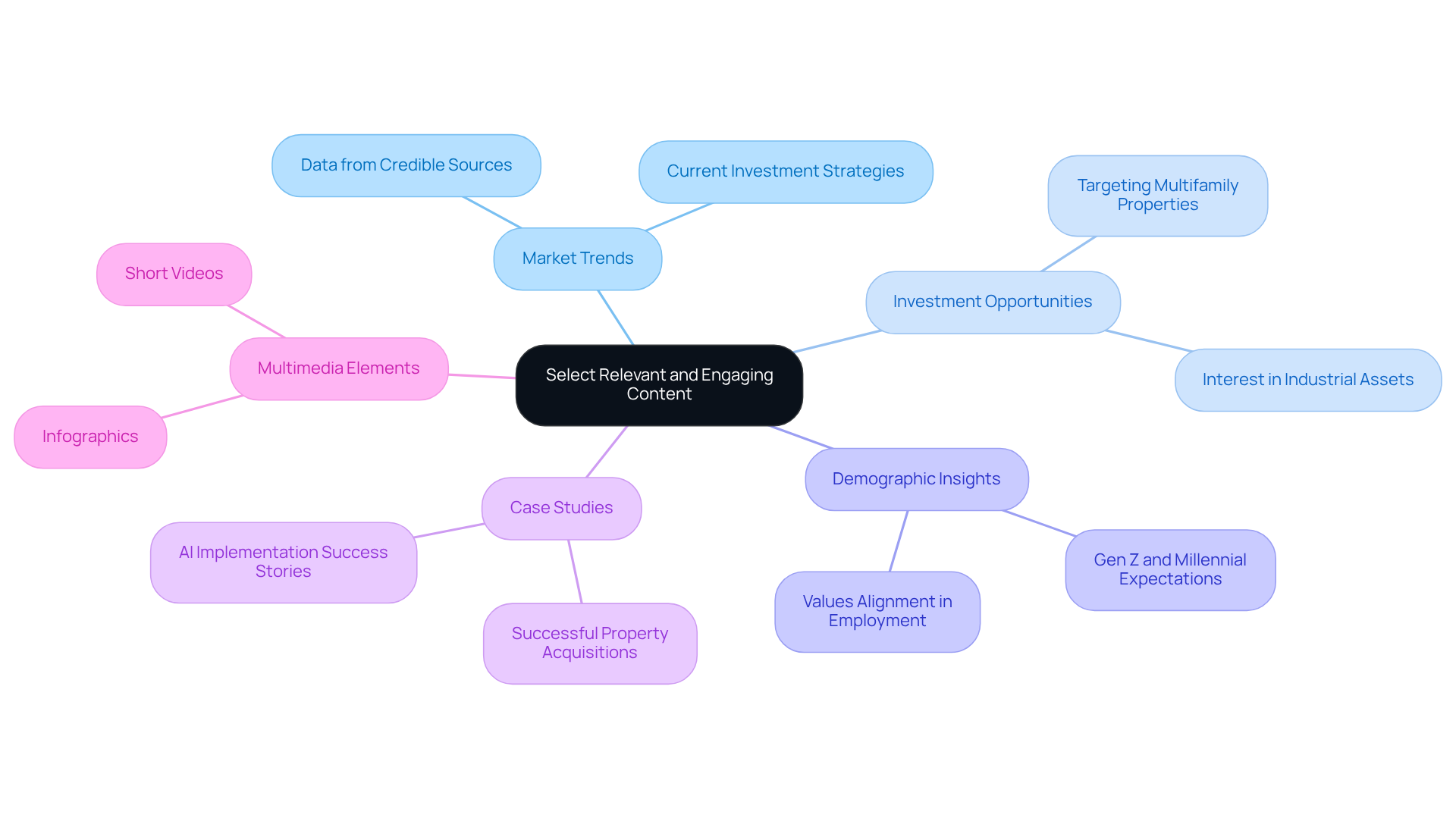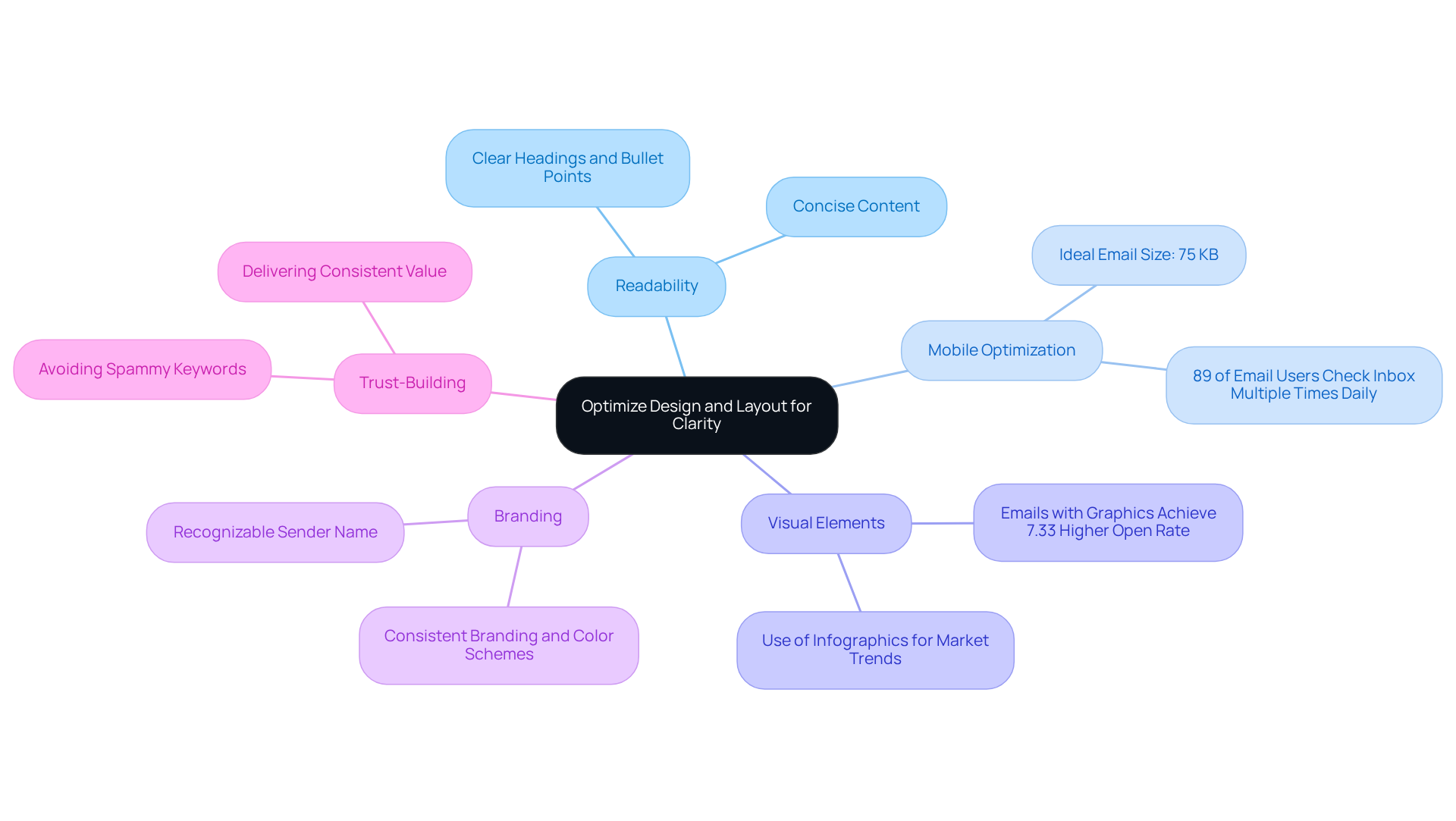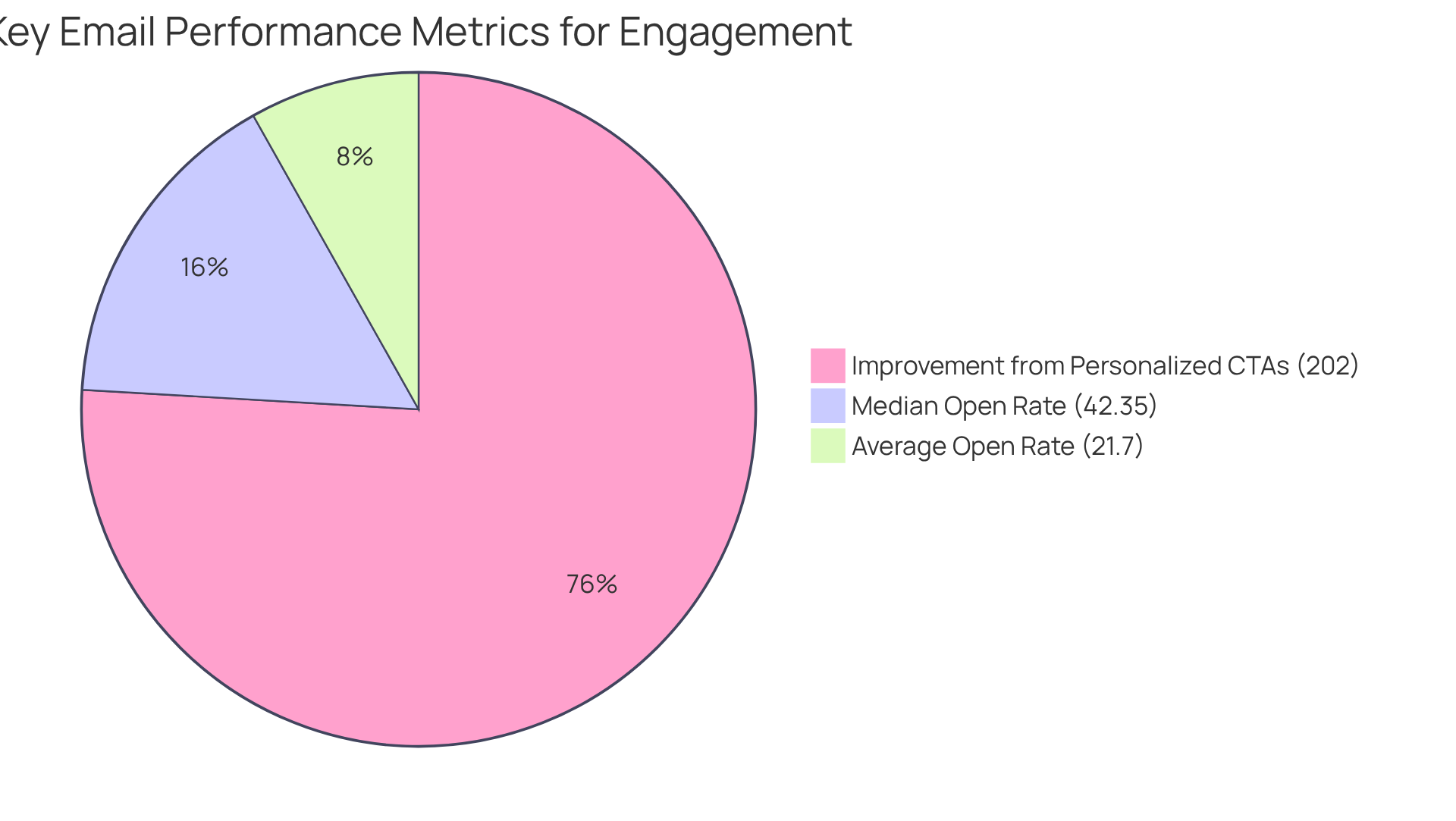Overview
To create effective commercial real estate newsletters, it is essential to:
- Define your audience
- Select relevant content
- Optimize design
- Monitor performance
Understanding audience needs is crucial as it significantly enhances engagement. By providing relevant and visually appealing content, along with continuous performance tracking, the newsletter can remain effective and responsive to subscriber interests. These practices not only ensure that the newsletter captures attention but also foster a deeper connection with the audience, ultimately driving better investment decisions.
Introduction
Crafting a successful commercial real estate newsletter requires more than merely delivering information; it necessitates a strategic approach that resonates with a diverse audience. By comprehensively understanding the unique needs and preferences of subscribers, organizations can tailor content that not only informs but also engages. However, as the landscape evolves and competition intensifies, how can one ensure their newsletter stands out and remains relevant? This article explores four essential practices that will empower real estate professionals to create effective newsletters that captivate their audience and drive engagement.
Define Your Audience and Their Needs
To create a successful commercial real estate newsletter, it is essential to begin with a clear definition of your target group. Identifying key demographics—such as age, profession, and investment experience—is crucial. Conducting surveys or interviews can provide valuable insights into their specific interests and pain points. For instance, real estate investors may prioritize information on emerging markets, while industry professionals might focus on regulatory updates. As noted, "Identifying a target group is the first step in developing a successful marketing strategy." By customizing content to these needs, you can significantly enhance interaction and satisfaction among your audience with commercial real estate newsletters.
Employing analytics tools to observe user behavior and preferences enables continuous enhancement of your demographic profile. A notable case involved Zero Flux, which boasts over 30,000 subscribers and discovered a strong interest in sustainability trends among its viewers. By incorporating this emphasis into their material, they considerably increased engagement rates, underscoring the essential role of understanding audience needs in newsletter success. Moreover, with 500 million searches on Google daily, the necessity for focused strategies to distinguish oneself in the saturated market is evident.
In 2025, the demographics of real estate investors present a diverse group, with varying interests that can be effectively addressed through targeted strategies. This method not only cultivates stronger relationships with subscribers but also establishes your publication as a reliable source in the competitive realm of commercial real estate newsletters.

Select Relevant and Engaging Content
Selecting materials that resonate with your audience's interests is crucial for effective communication. Begin by curating a blend of market trends, investment opportunities, and demographic insights. Support your content with data from credible sources, ensuring it remains factual and informative. Incorporate case studies or success stories to illustrate key points, making the information both relatable and actionable.
For example, a publication featuring an 'Investment Spotlight' segment that highlights a successful property acquisition can inspire readers while providing practical insights. Furthermore, consider integrating multimedia elements like infographics or short videos to enhance engagement and accommodate various learning styles.

Optimize Design and Layout for Clarity
The design and layout of your publication are pivotal in shaping how information is perceived. A clean, professional layout that prioritizes readability is essential. Break content into digestible sections, employing clear headings and bullet points to facilitate quick scanning. Ensure compatibility with mobile devices, as a significant number of users will access your publication via their phones. Notably, 89% of email users check their inbox multiple times a day, underscoring the necessity for mobile optimization.
Incorporate visual elements such as charts and graphs to present data effectively. For instance, a well-designed infographic summarizing market trends can convey complex information at a glance, making it more engaging for readers. Emails featuring graphics achieve a 7.33% higher open rate, reinforcing the value of visual data presentation. Consistent branding and color schemes contribute to establishing a professional identity, reinforcing trust and recognition among members. Building trust with a recognizable sender name and delivering consistent value is crucial for email success. As email marketing continues to evolve, adhering to these best practices in design and layout will be vital for success in 2025.

Monitor Performance and Adapt Strategies
To ensure your publication remains relevant and effective, it is crucial to regularly monitor performance metrics such as open rates, click-through rates (CTR), and subscriber growth. Utilize tools like Google Analytics or email marketing platforms to gather data on reader engagement. For context, the average open rate for commercial real estate newsletters in 2025 is approximately 21.7%, while the median email open rate across all campaigns stands at 42.35%. This underscores the necessity for continuous improvement in this area, particularly as 95% of marketers assert that email marketing is an outstanding channel for achieving business goals.
Examining which types of material resonate most with your audience is essential. If data indicates that articles on investment opportunities yield higher engagement, consider increasing their frequency. Furthermore, segmenting your email lists can significantly enhance open rates by delivering targeted content. Actively seeking feedback from members through polls or surveys can unveil preferences and highlight areas for improvement. Notably, personalized CTAs convert 202% better than their generic counterparts, emphasizing the effectiveness of tailored messaging in boosting engagement. This iterative approach fosters commercial real estate newsletters that are responsive and evolve with the needs of their audience, ultimately enhancing subscriber engagement and retention.

Conclusion
Creating an effective commercial real estate newsletter hinges on understanding your audience and delivering tailored content that meets their specific needs. By defining your target demographic and curating relevant information, newsletters can become powerful tools for engagement and relationship-building in the competitive landscape of commercial real estate.
Key practices involve:
- Selecting engaging content that resonates with your audience
- Optimizing design for clarity
- Continuously monitoring performance to adapt strategies
Leveraging analytics tools to gauge reader preferences and employing a clean, professional layout can significantly enhance the impact of your newsletters. Incorporating multimedia elements and personalizing content further increases engagement, ensuring that your publication remains a trusted source of information.
Ultimately, the success of commercial real estate newsletters lies in their ability to evolve with the audience's needs. By implementing these best practices, professionals can foster stronger connections with subscribers and position their newsletters as indispensable resources in the industry. Embracing these strategies not only enhances engagement but also elevates the overall effectiveness of communication within the commercial real estate sector.




